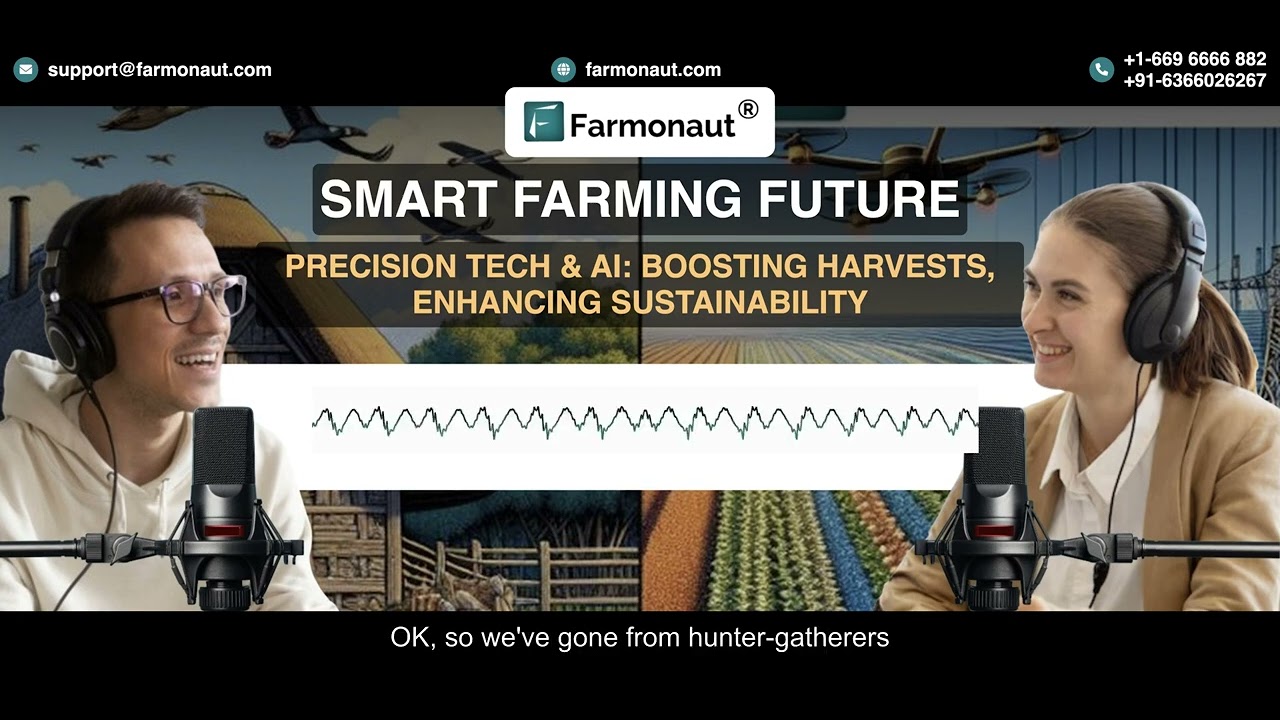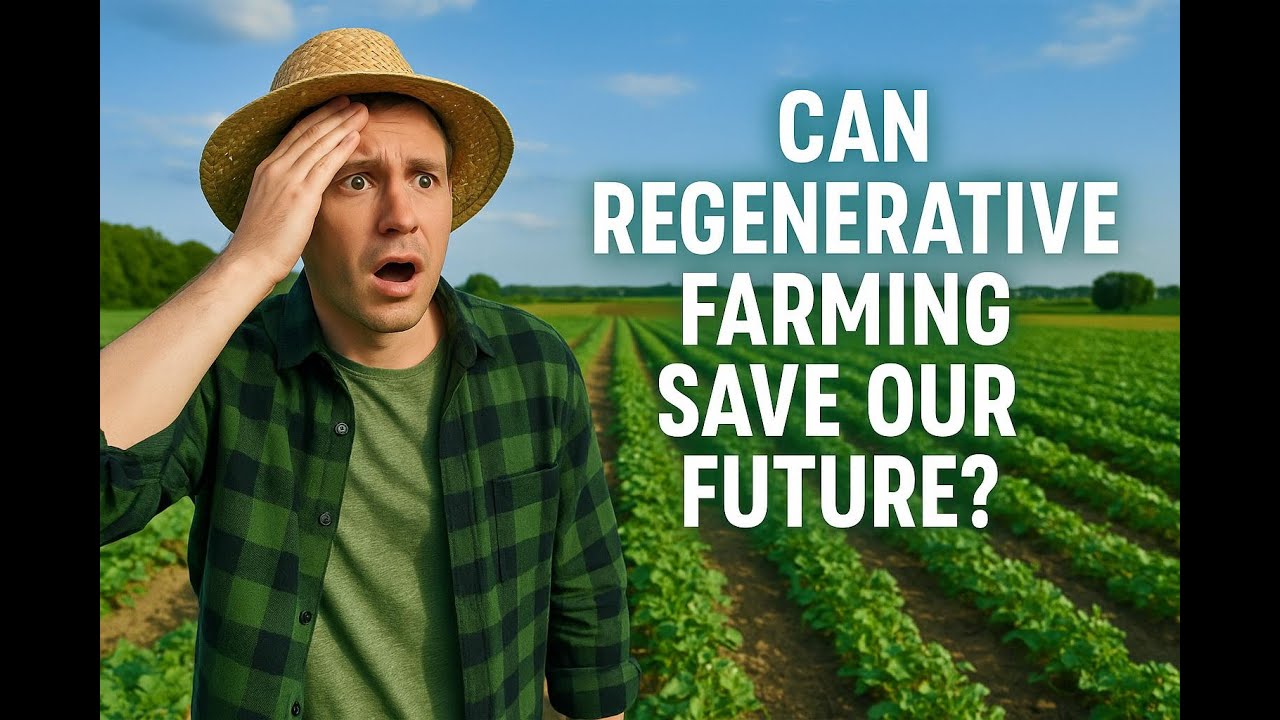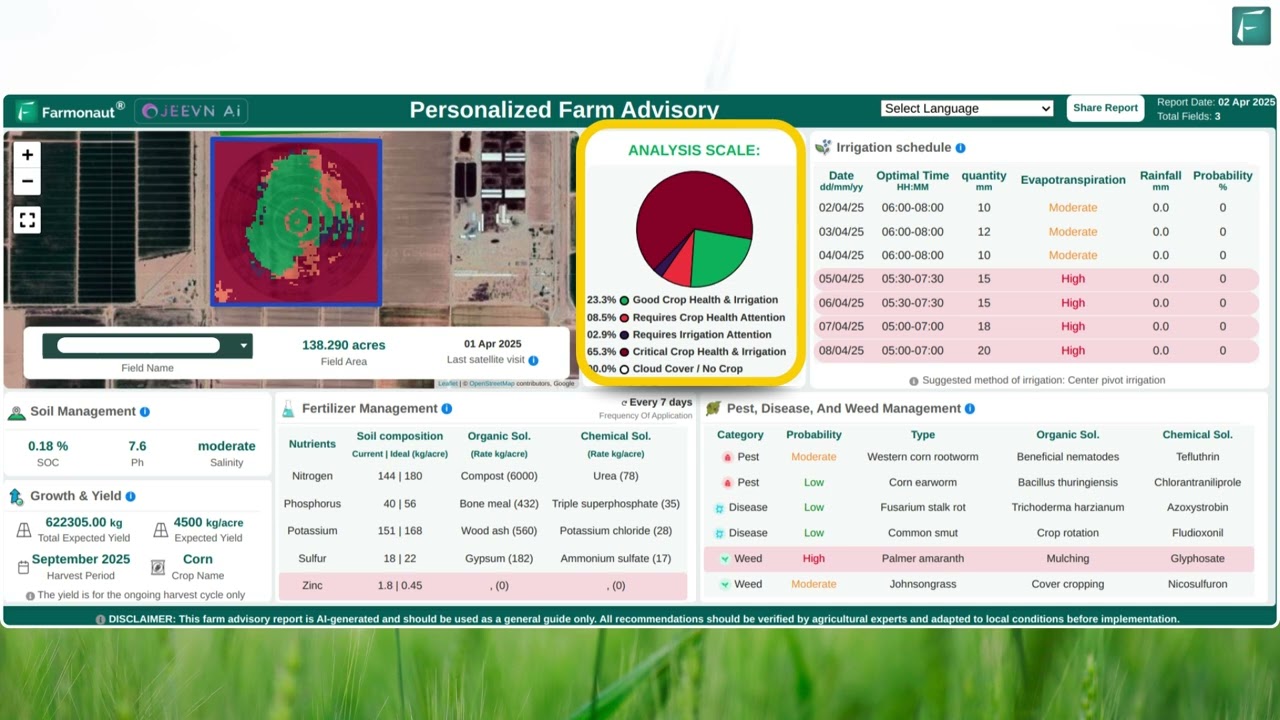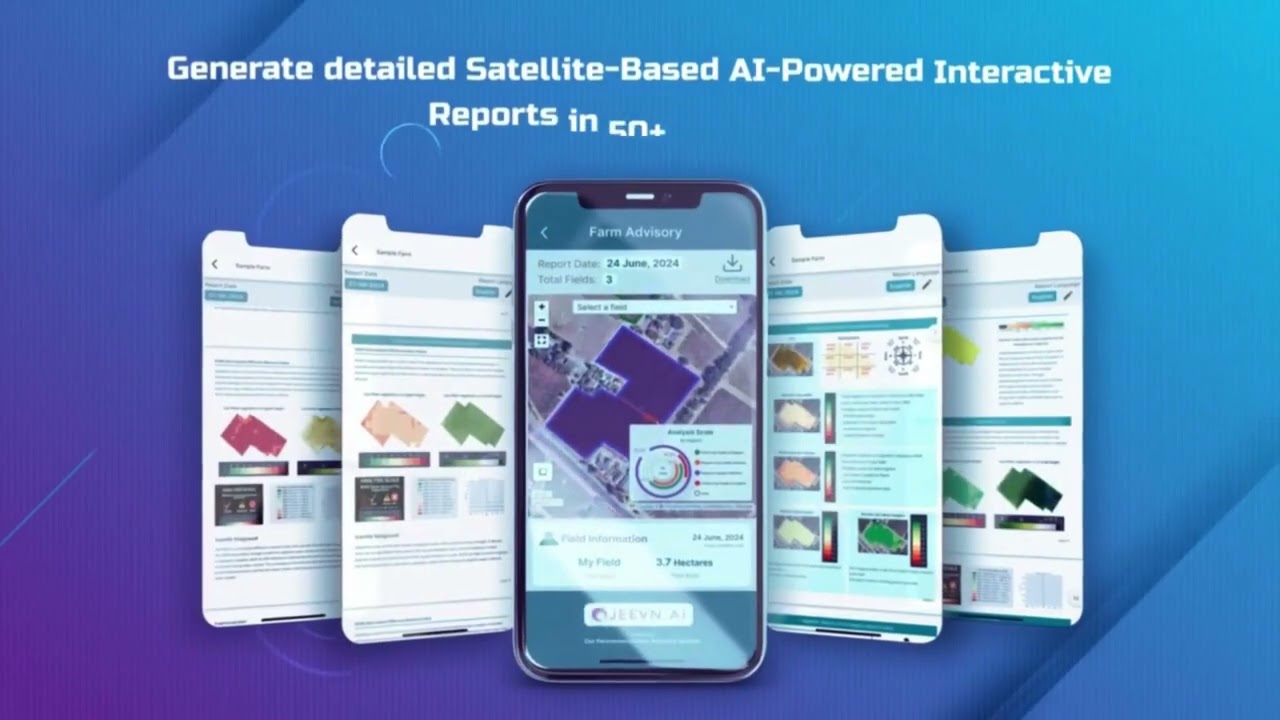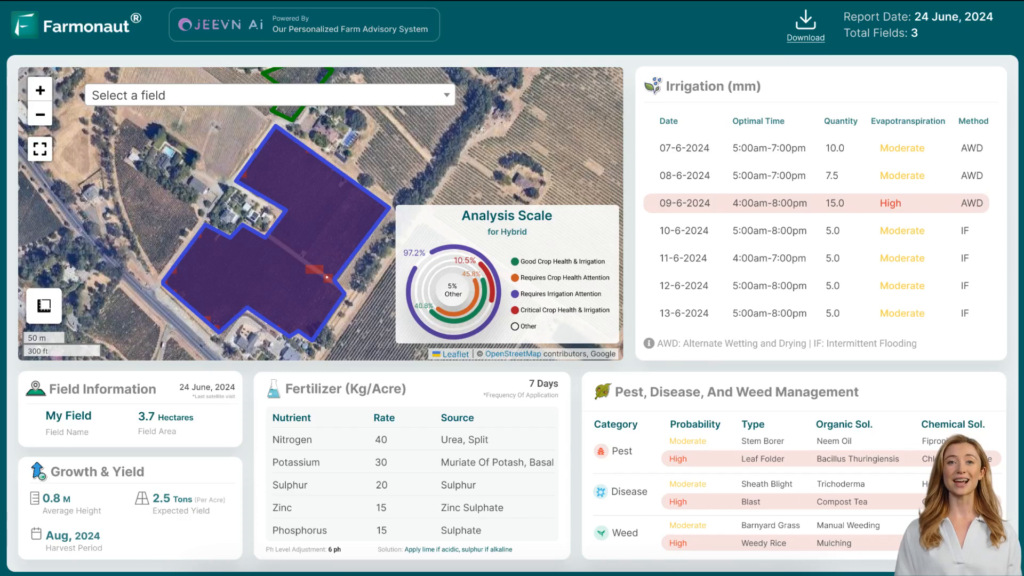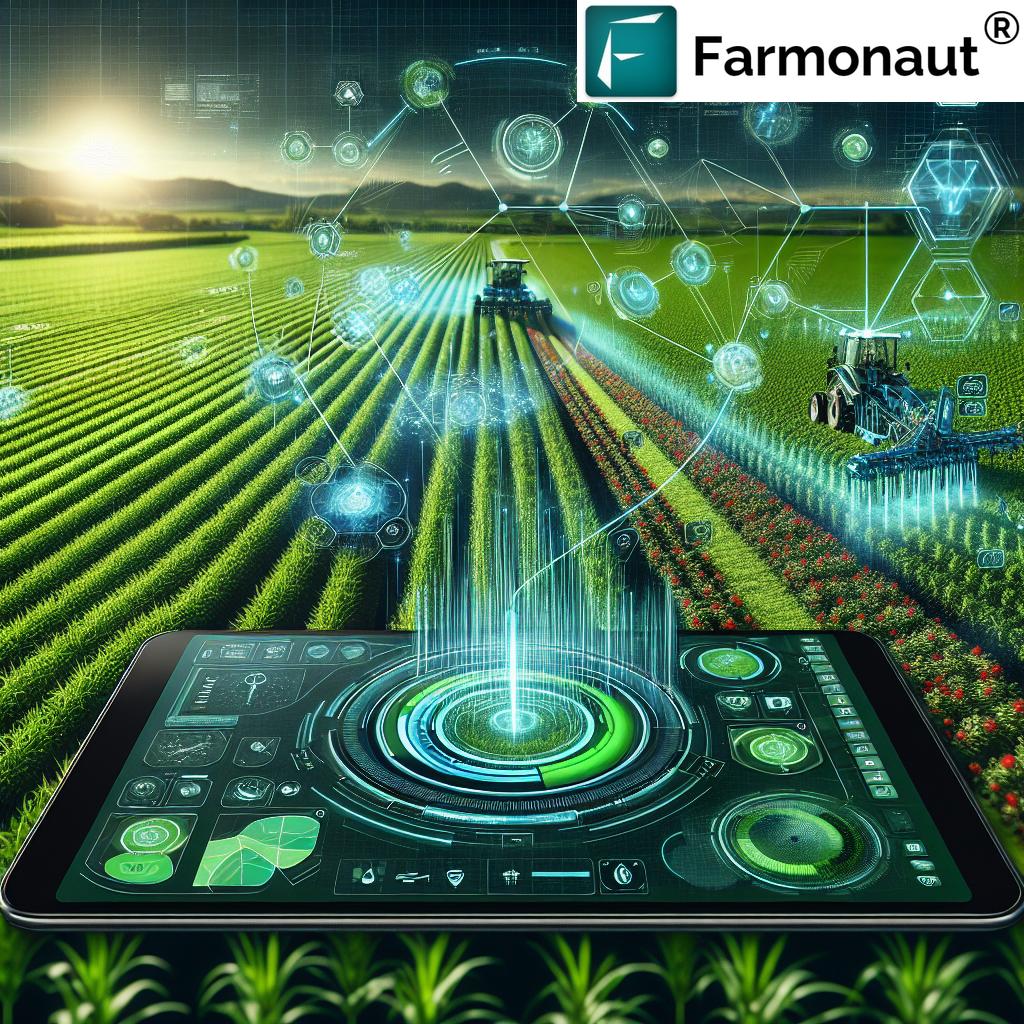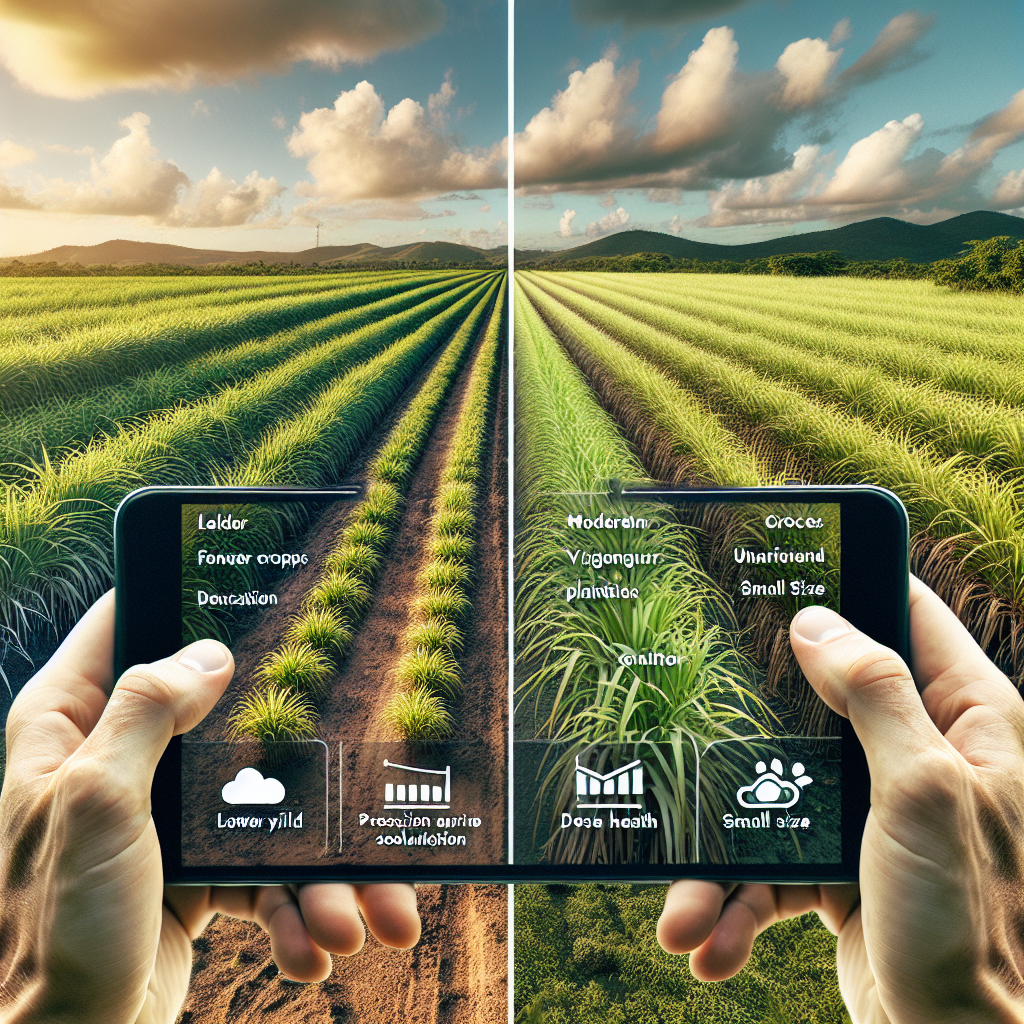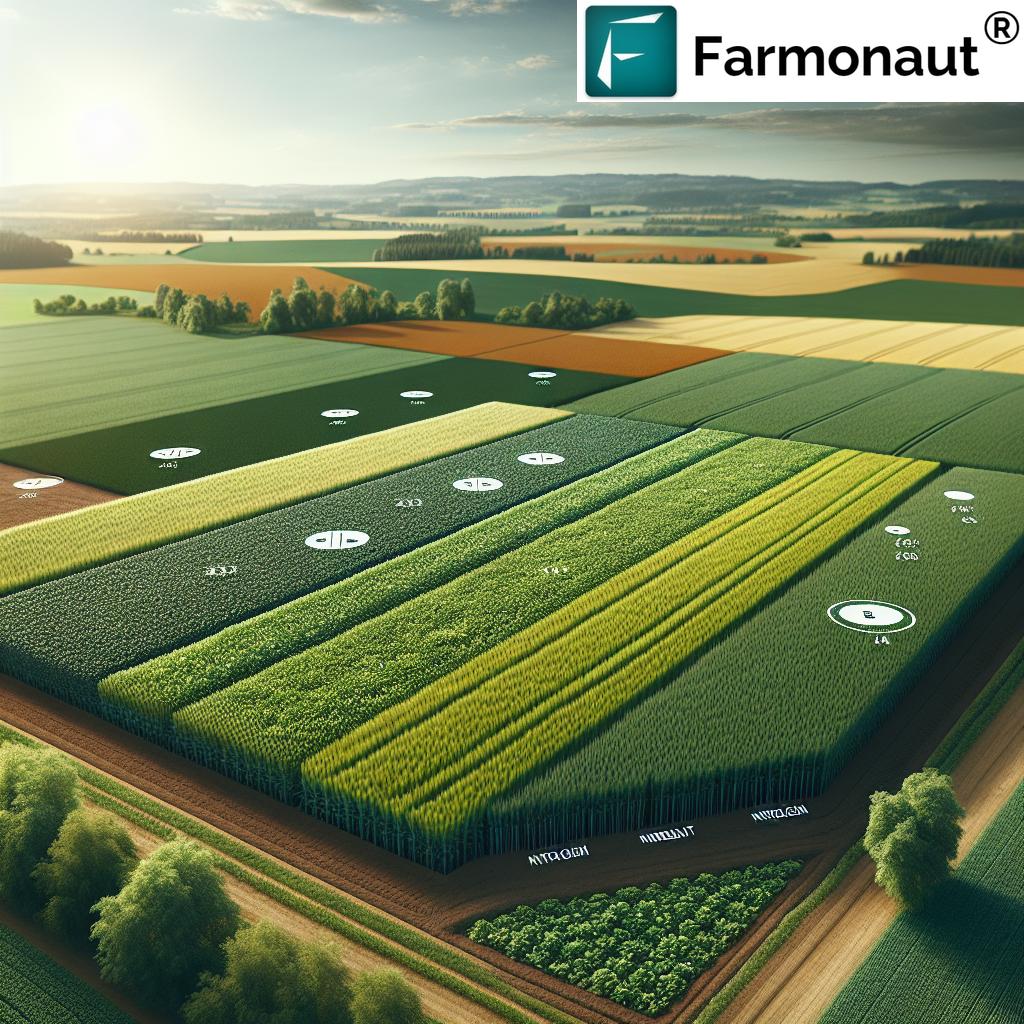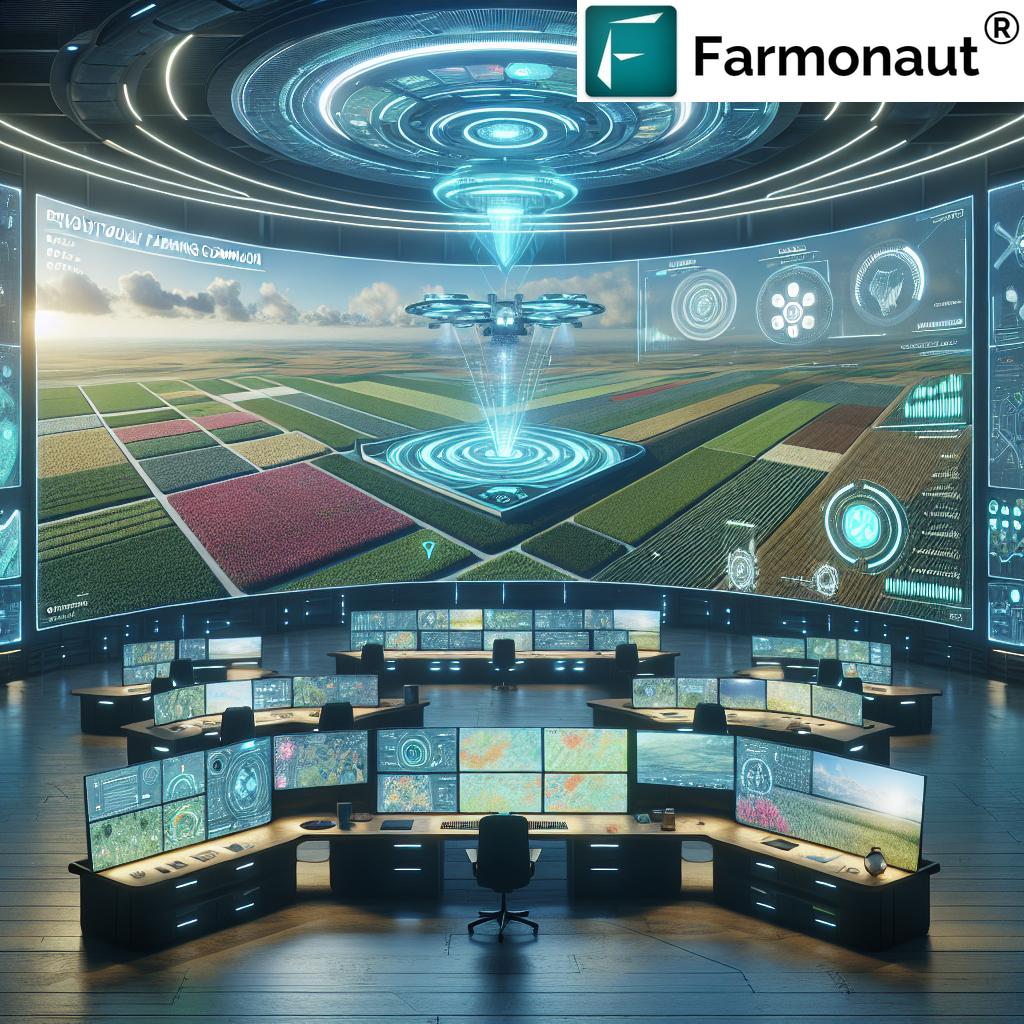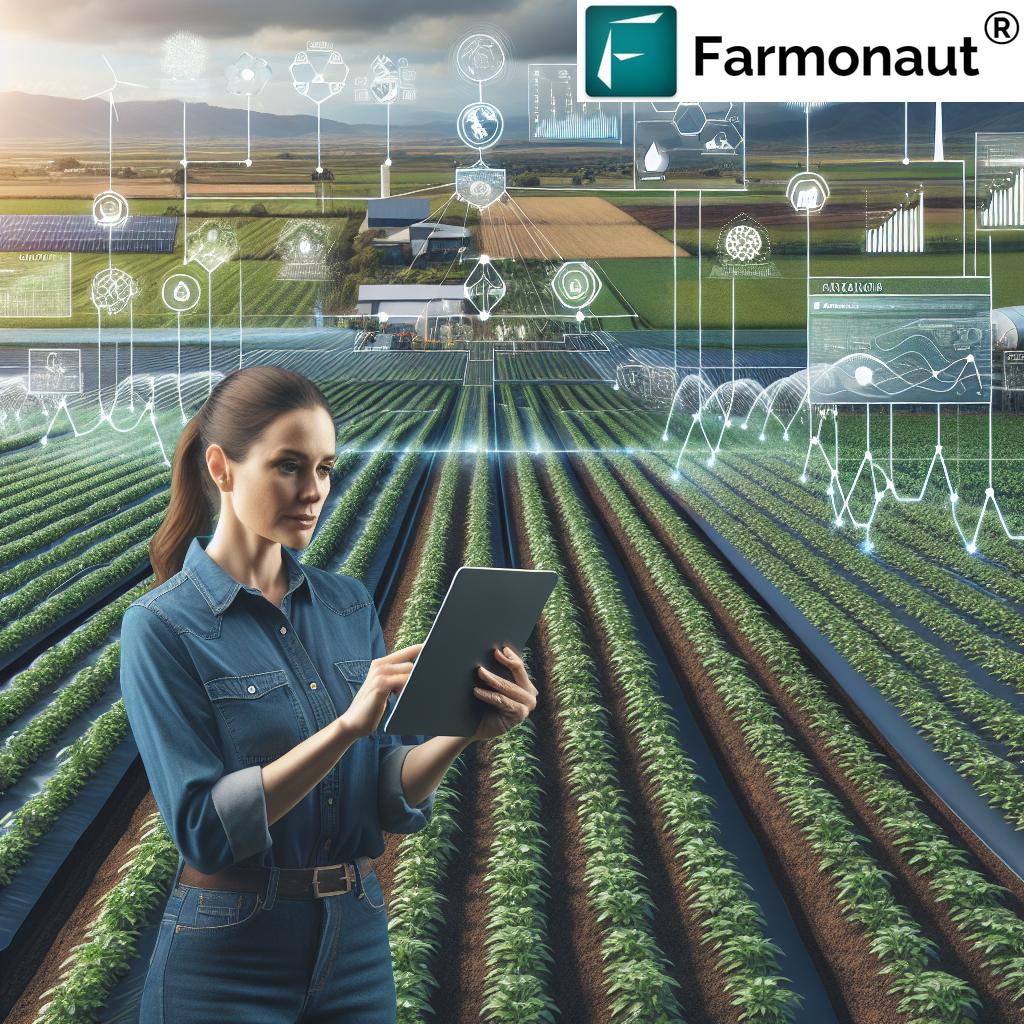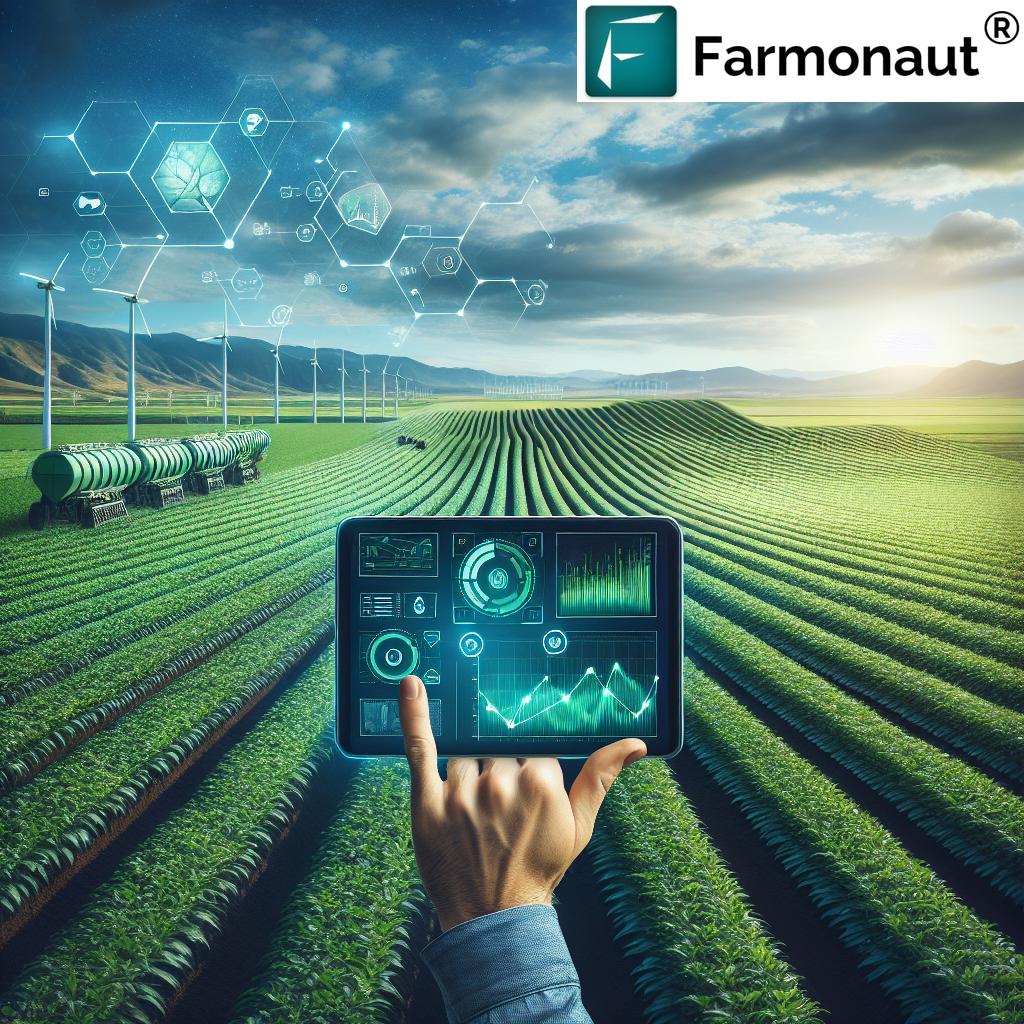Top Smart Farming Options & Agriculture Careers for 2025
“By 2025, smart farming technologies are projected to increase global crop yields by up to 25%.”
Introduction: The Evolving Landscape of Smart Farming in 2025
In 2025, the agriculture sector continues to undergo profound transformation driven by technological advancements and escalating market demands. As the global population grows and environmental challenges intensify, innovations in smart farming options and diversified agriculture career options have become central to ensuring sustainable food production and rural development.
This article explores the current landscape of smart farming options, traditional farming methods, and emerging agriculture job options that promise to shape the future of farming.
With a comprehensive review of the technologies, practices, and career paths shaping the sector, this guide aims to equip readers with the insights needed to navigate a rapidly changing agricultural world.
Smart Farming Explained: Technology and Innovation Shaping Agriculture
Smart farming, also known as precision agriculture, leverages cutting-edge technologies to optimize every aspect of agriculture production. By integrating the Internet of Things (IoT), artificial intelligence (AI), drones, big data analytics, and more, today’s farmers can make informed decisions rooted in real-time data.
This is a far cry from traditional methods, where crop management, fertilization, and irrigation were often guided by experience and observation alone. The smart approach enables precision application of inputs, reducing waste, enhancing yields, and minimizing environmental impact. As autonomous tractors, robotic harvesters, and AI-powered monitoring systems become increasingly accessible, the possibilities for efficiency are expanded across the global agricultural landscape.
Let’s examine how smart farming options and technology are shaping agriculture job options and opening new opportunities for those seeking careers in this evolving sector.
Key Technologies Driving Smart Farming Options
- Internet of Things (IoT) Sensors:
- Soil sensors monitor moisture, pH, and nutrient levels, enabling farmers to optimize irrigation and fertilization practices.
- Weather stations provide hyper-local forecasts, supporting timely crop management decisions.
- AI & Big Data Analytics:
- AI analyzes data collected from fields, drones, and sensors to identify trends and recommend customized strategies for production optimization.
- Drones & Autonomous Vehicles:
- Drones support crop monitoring, pest control, and rapid field mapping, while robotic tractors/harvesters address labor shortages and reduce downtime.
- Blockchain Integration:
- Blockchain ensures transparent crop tracking from farm to fork, supporting food safety and traceability.
- Secure, immutable records build trust across supply chains.
- Remote Sensing & Satellites:
- Satellites offer real-time and multispectral imagery for monitoring crop health, disease outbreaks, weather anomalies, and environmental impact.
Smart Farming in Action: Precision Tools Changing Agriculture in 2025
-
Variable Rate Technology (VRT):
Enables the precise application of fertilizer, seed, or pesticide based on data-driven field mapping. As a result, it reduces input waste, minimizes environmental impact, and improves yields. -
Integrated Irrigation Systems:
Advanced systems use real-time soil moisture data from sensors and weather stations to automatically adjust water delivery, optimizing resource use and boosting crop health. -
AI-Driven Pest and Disease Monitoring:
Combining high-resolution images from drones with AI analysis, these systems detect early signs of pest or disease risk, enabling responsible, targeted intervention. -
Blockchain for Food Traceability:
Use of blockchain records ensures full traceability from farm to fork, strengthening food security while meeting consumer demands for transparency. -
Autonomous Robotics:
Robotic harvesters and tractors operate with high precision, reducing labor costs and supporting continuous, efficient production cycles.
Benefits of Smart Farming Tech in the Agriculture Sector
- Boosted Yields: More accurate input application and crop health monitoring mean higher, more reliable food production.
- Reduced Environmental Footprint: Precision application of water, fertilizers, and pesticides lowers runoff, supporting sustainable farming.
- Efficient Use of Resources: Data-driven decisions minimize wasted seeds, water, and chemicals.
- Labor Optimization: Automation and robotics help address rural labor shortages and reduce repetitive manual work.
- Enhanced Food Security & Traceability: Blockchain and AI integration bolster food safety and consumer trust in the supply chain.
Diverse Farming Options: Meeting Global Needs Sustainably
While smart farming options represent the cutting edge, a blend of traditional and alternative farming methods remains vital for global food security. The sector is rapidly expanding beyond conventional ploughing and planting. Let’s break down leading farming options and techniques solving food production challenges in 2025 and beyond:
-
Organic Farming
- Prioritizes soil health, biodiversity, and natural pest control.
- Gains traction with consumers demanding chemical-free food.
- Promotes resilient ecosystems and responsible farming.
-
Agroforestry
- Integrates trees, crops, and livestock on the same land.
- Sequesters carbon, improves resilience, and diversifies farmer incomes.
-
Hydroponics & Vertical Farming
- Uses soil-less techniques for growing crops indoors or in urban settings.
- Enables year-round food production with minimal water usage and ecological impact.
- Vertical farming in urban areas brings fresh produce closer to the consumer.
-
Regenerative Agriculture
- Focuses on rebuilding soil health, increasing biodiversity, and restoring ecosystem functions.
- Seen as a core solution to climate challenges and a major focus of emerging agriculture job options in 2025.
Key Considerations: Selecting the Right Farming Techniques in 2025
- Market Demands: Understand shifting consumer preferences (e.g., rising demand for organic food).
- Environmental Footprint: Choose farming methods that minimize ecological impact.
- Location Factors: Urban areas are ideal for vertical farming, while rural expanses suit agroforestry and regenerative agriculture.
- Technology Access: Evaluate available resources—IoT sensors, water management, drones—for scaling up operations.
For those who want to leverage state-of-the-art remote sensing and advisory insights in these fields, Farmonaut’s platform provides real-time crop and soil monitoring via satellite imagery and AI. Farmonaut also supports urban and vertical farming specialists with its large-scale farm management suite, offering robust analytics for both traditional and next-generation farming operations.
The Impact of Smart Farming Technologies on Food Production
The integration of data-driven practices, drones, and AI has already proven capable of significantly improving yields, reducing waste, and optimizing resource use. By 2025, these advancements are helping the sector overcome strains from labor shortages, unpredictable weather, and supply chain disturbances.
In particular, smart farming options are unlocking opportunities for both established and emerging agripreneurs in developing and developed markets alike, driving the future of agriculture careers towards tech-savvy and data-focused skill sets.
“Over 60% of new agriculture jobs in 2025 will require skills in precision farming and data analytics.”
Emerging Agriculture Career Options in 2025: Shaping Your Future in Farming
The evolving agricultural landscape of 2025 is creating abundant agriculture job options and career paths far beyond fieldwork. With the digitization and automation of farming practices, demand is surging for specialists who can harness data, develop new technologies, and address global food security challenges.
Major Agriculture Career Options in the Smart Farming Era
-
Agricultural Data Analyst:
- Focuses on collecting and analyzing data from sensors, satellites, and drones to optimize farm productivity and efficiency.
- Key skills: Data analytics, GIS, statistics, and AI tools.
- Vital in implementing API-driven data solutions in agriculture enterprises.
-
Agri-Tech Engineer:
- Designs, builds, and maintains smart farming equipment—from autonomous drones to robotic irrigation systems.
- In demand by both private companies and government agencies seeking to modernize farming options.
-
Sustainability Officer (Agriculture):
- Implements environmentally responsible practices, aligning production with global climate goals.
- Frequently involved in carbon footprinting initiatives, monitoring and reducing emissions using satellite-driven tools.
-
Precision Agronomist:
- Experts in applying precision farming techniques to improve crop yields and resource use.
- Work closely with farmers and tech teams to implement data-driven solutions for sustainable food production.
-
Urban Farmer & Vertical Farming Specialist:
- Utilize hydroponics and vertical farming to produce high yields in limited spaces, often in urban environments.
- Deploy IoT and remote sensing for efficient urban agriculture management.
-
Blockchain Traceability & Supply Chain Analyst:
- Manages blockchain-based traceability solutions that ensure each product’s integrity from farm to fork.
- Supports consumer trust and regulatory compliance in local and international agriculture markets.
- Find more information on traceability solutions for food, forest, and carbon supply chains.
-
Fleet & Resource Management Professional:
- Coordinates the movement and efficient use of agricultural machinery and logistics fleets. This role is crucial for maximizing productivity during planting and harvest cycles.
- Leverage apps like Farmonaut Fleet Management for cost and resource optimization.
-
Agro-Environmental Impact Assessor:
- Monitors, evaluates, and reports on farming impacts—from soil health to resource use and carbon emissions—often with the aid of satellite-based environmental tracking tools.
- Ensures sustainable farming practices are adopted globally.
-
Financial Specialist (Agriculture Credit & Insurance):
- Develops and manages products for crop loans and insurance, using satellite-based verification and risk assessment tools for streamlined disbursal and claims, reducing fraud.
Expansion into Policy, Economics, and Research
Agricultural careers in 2025 are not limited to hands-on operations. There’s increasing demand in:
- Policy Development – Crafting smart farming incentives and regulatory frameworks.
- Economics & Food Security Analysis – Assessing national and global food systems for stability and resilience.
- Research & Development – Innovating new crops, sustainable methods, and automation.
For organizations, large farms, or government agencies looking to deploy smart infrastructure at scale, Farmonaut’s large-scale farm management solutions (Agro Admin App) offer complete monitoring, reporting, and resource planning, supporting diverse agriculture job options.
Smart Farming Technologies, Key Skills, and Estimated Career Opportunities by 2025
| Smart Farming Technology / Career Path | Description | Key Applications | Required Skills | Estimated Job Growth (2025) | Average Salary Range (USD) |
|---|---|---|---|---|---|
| Precision Drones & Robotics | Automated machines & drones for monitoring, seeding, harvesting. | Crop scouting, mapping, weed/pest control, robotic harvest. | Drone operation, robotics, AI, mechanical engineering. | +22% | $55,000 – $110,000 |
| IoT Sensors (Soil/Weather) | Networked devices tracking soil, moisture, climate data. | Irrigation automation, real-time crop feedback, resource management. | IoT device setup, data analysis, agronomy, technical troubleshooting. | +18% | $50,000 – $95,000 |
| Satellite & Remote Sensing Analysis | Real-time crop/soil health monitoring using satellite imagery. | Vegetation analysis, environmental impact, smart inputs application. | GIS, remote sensing, data analytics, plant science. | +16% | $62,000 – $120,000 |
| AI & Big Data Analyst (AgriTech) | Develops models for yield forecasting and decision-making. | Yield modeling, anomaly detection, prescriptive insights. | Python/R, machine learning, statistics, data visualization. | +28% | $70,000 – $130,000 |
| Blockchain Traceability Specialist | Manages digital records from farm to fork for food security. | Supply chain tracking, anti-fraud, verification. | Blockchain, supply chain, digital security, data management. | +15% | $68,000 – $115,000 |
| Vertical Farming & Hydroponics Manager | Implement high-density soil-less systems for urban food production. | Greenhouse management, climate control, yield maximization. | Urban agriculture, hydroponics, system automation. | +20% | $65,000 – $115,000 |
| Fleet & Resource Management Specialist | Optimizes movement of machinery/fleets in large-scale operations. | Logistics, input delivery, harvest coordination. | Operations management, logistics, software skills. | +12% | $58,000 – $105,000 |
| Sustainability & Carbon Analyst | Monitors, reports, and mitigates environmental impacts/carbon. | Carbon footprinting, compliance, ecosystem services monetization. | Environmental science, data analysis, reporting. | +24% | $60,000 – $108,000 |
| Policy & Economic Analyst (Agri-Food) | Analyzes policies, markets, and security for food systems. | Forecasting, regulatory compliance, market modeling. | Policy analysis, economics, statistics, communication. | +13% | $55,000 – $100,000 |
As you can see, smart farming options are catalyzing the creation of dynamic, lucrative, and future-proof agriculture career options for 2025 and beyond.
Farmonaut’s Role in the Future of Smart Farming & Agriculture Job Options
We at Farmonaut recognize that data-driven agricultural solutions are reshaping how the world’s food is produced, distributed, and managed. By leveraging satellite imagery, AI-driven advisory tools, and blockchain-based traceability, our platform is making smart farming technology affordable and accessible for individual farmers, agribusinesses, governments, and lenders globally.
Our subscription-based model offers flexible access to high-frequency satellite monitoring, AI-powered advisory (Jeevn AI), blockchain traceability, and environmental compliance tools—allowing users to rapidly adapt their skills and operations to industry trends.
For developers and businesses looking to integrate satellite-driven data directly into their in-house systems or apps, our robust API and developer documentation enable seamless connection to real-time agricultural insights.
We also provide digital verification for crop loans and insurance (details here), helping financial institutions reduce fraud and increase the accessibility of agrifinance for rural and urban growers alike.
Optimizing Your Journey: Choosing Smart Farming Career Paths
Best Practices for Launching into Agriculture Career Options
-
Identify Your Area of Passion and Skill:
- Are you drawn to data science, hands-on robotics, or sustainability research?
- Choose smart farming options aligned with your strengths, whether in technical innovation or environmental stewardship.
-
Upskill and Stay Updated:
- Leverage online learning, certifications, and field internships.
- Stay updated on evolving technological advancements, IoT, and blockchain trends in agriculture.
-
Network Globally:
- Join forums and professional groups in agri-tech, policy, and sustainability to collaborate and expand your opportunities beyond local markets.
- Choose Flexible Platforms:
FAQ: Agriculture Options, Careers, and Technology in 2025
What are smart farming options?
Smart farming options encompass data-driven, technologically advanced agricultural practices, such as using IoT sensors for soil analysis, deploying drones for monitoring crops, and integrating AI for pest forecasting. These methods optimize yields, reduce waste, and promote sustainable food production.
How are agriculture career options different in 2025 compared to previous years?
In 2025, agriculture job options are increasingly focused on roles requiring technological skills, such as data analytics, drone operation, AI platform management, and blockchain traceability. Many positions are emerging in sustainability, research, and digital resource management.
Which smart farming technologies are most in demand?
Leading technologies include IoT soil and weather sensors, remote sensing (satellite) tools, drones, AI advisory systems, autonomous machinery, and blockchain for supply chain traceability.
Can traditional farming methods coexist with new technology?
Absolutely. Modern agriculture blends traditional knowledge and alternative methods (like organic farming, agroforestry) with precise, data-based decision-making to foster resilient, sustainable, and productive systems.
What does Farmonaut offer to agriculture professionals and businesses?
We provide satellite-powered monitoring, AI-driven real-time advisory, blockchain-based traceability, fleet/resource management, and carbon footprinting tools for professionals, businesses, and institutions, supporting productivity and sustainability.
How can I start using satellite-based agriculture insights?
Simply sign up for the Farmonaut platform via web or mobile app, or integrate data directly into your systems through our API and developer resources.
Conclusion: The Future of Agriculture Careers & Smart Farming
By 2025, agriculture is a dynamic, tech-driven industry where smart farming options are the bedrock of sustainable food production, resilience, and economic growth.
The sector continues to undergo profound transformation—not just through new machinery or crop varieties, but by equipping future professionals with skills in data, AI, digital traceability, and precision agriculture.
From autonomous tractors to AI advisories and blockchain supply chains, the opportunities are expanding for those ready to shape the future of farming. At the same time, embracing diverse farming methods like organic agriculture, agroforestry, and vertical farming remains vital for global food security and environmental health.
Whether your passion lies in developing the next breakthrough technology, managing sustainable farms, or ensuring food traceability, agriculture career options in 2025 promise profound impact, innovation, and growth.
Let us commit to leveraging these smart farming options and new agriculture job options, ensuring the sector remains adaptive, resilient, and capable of feeding the world responsibly for generations to come.




